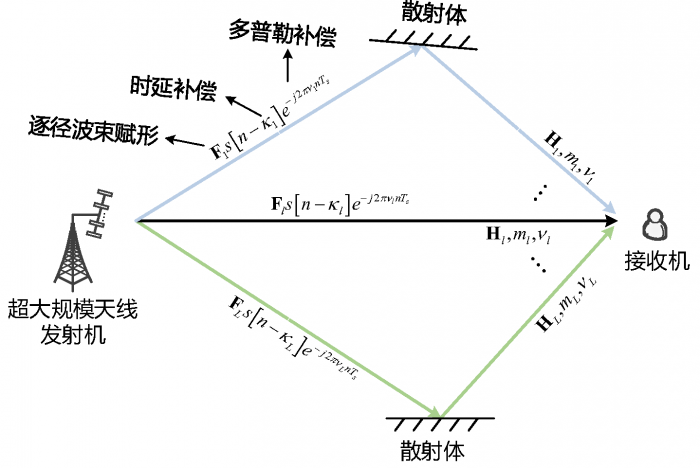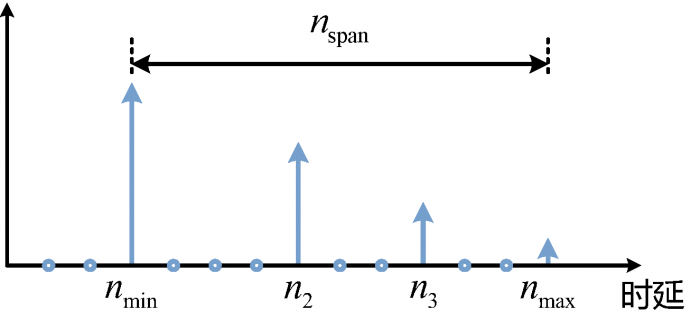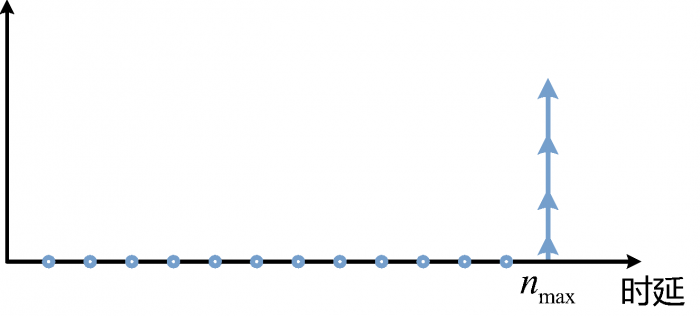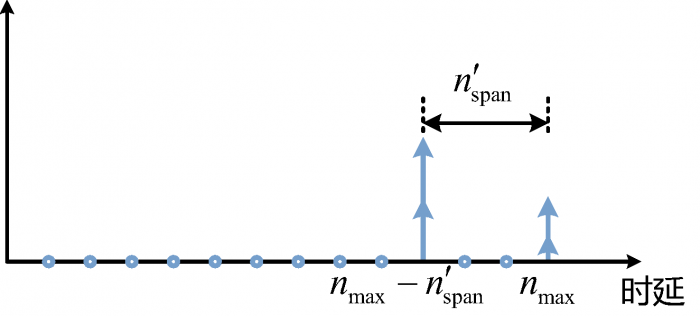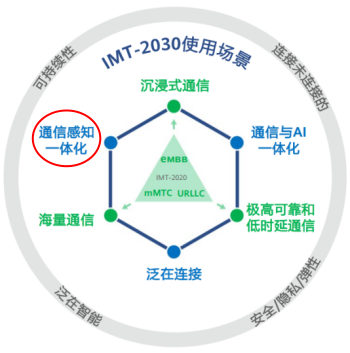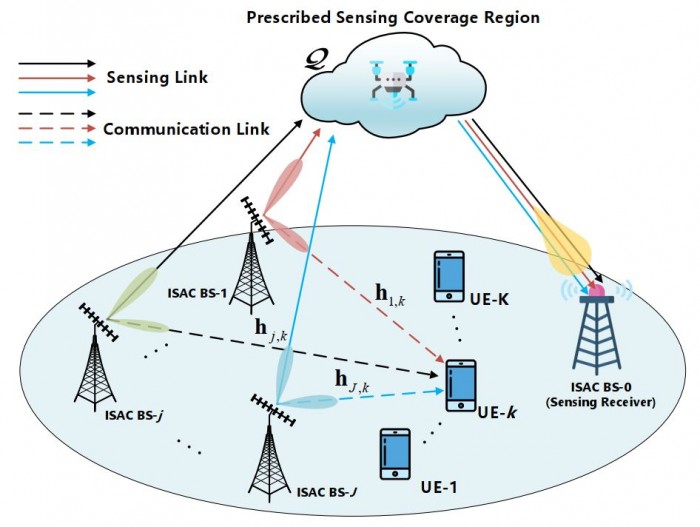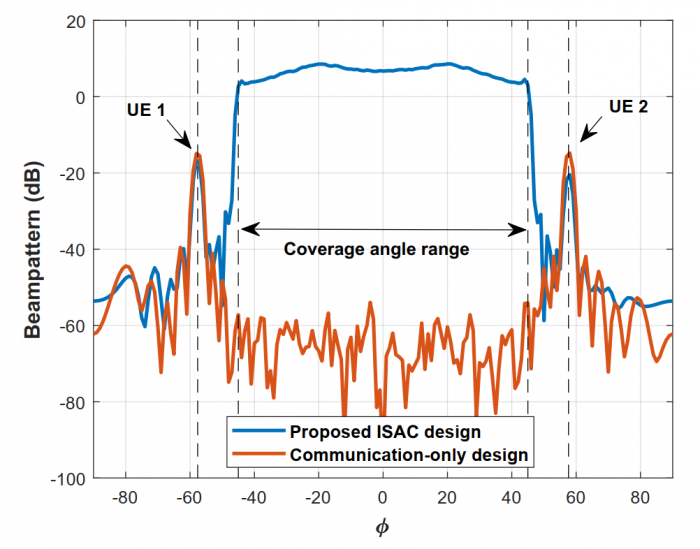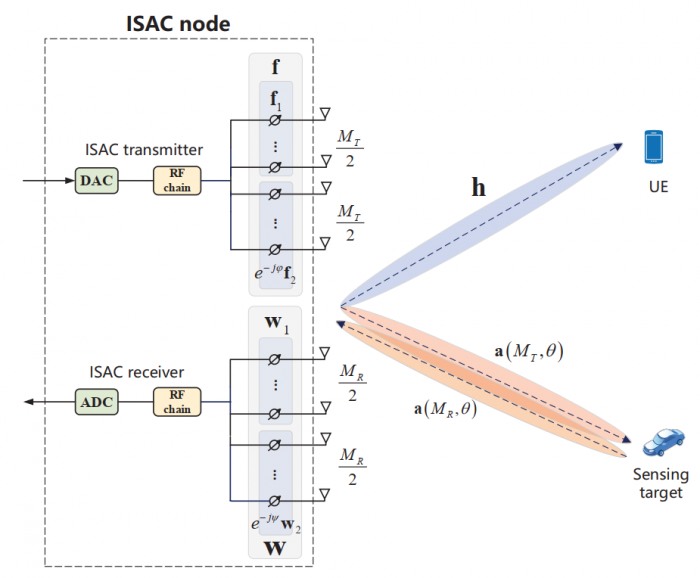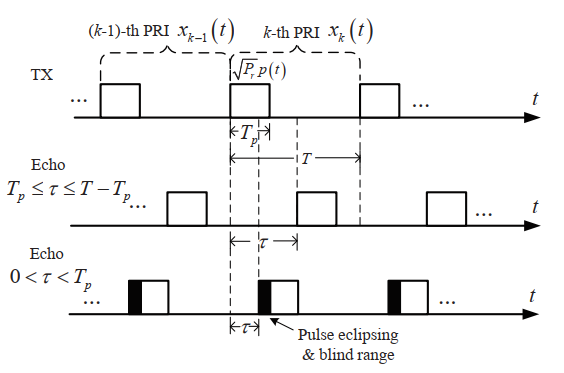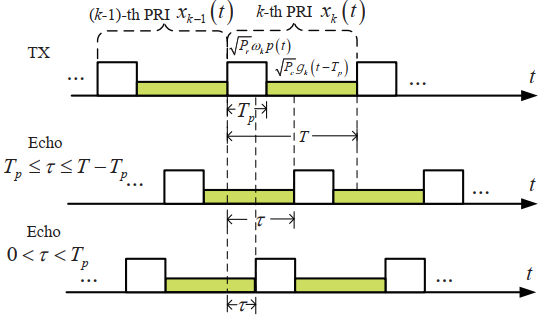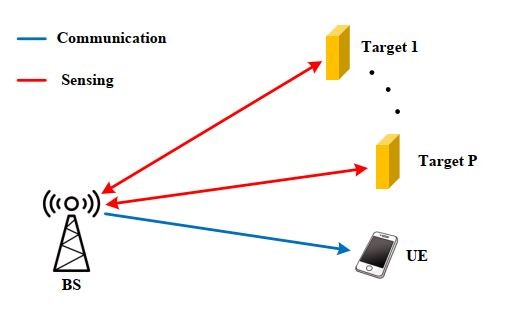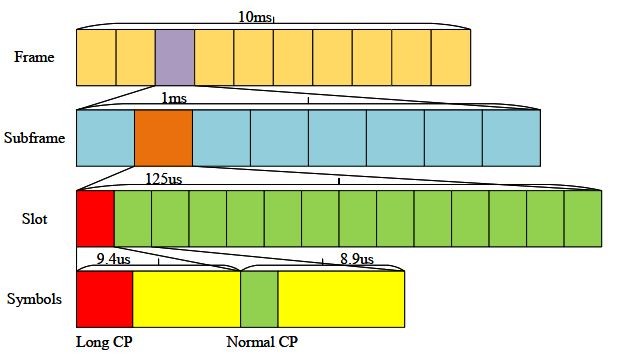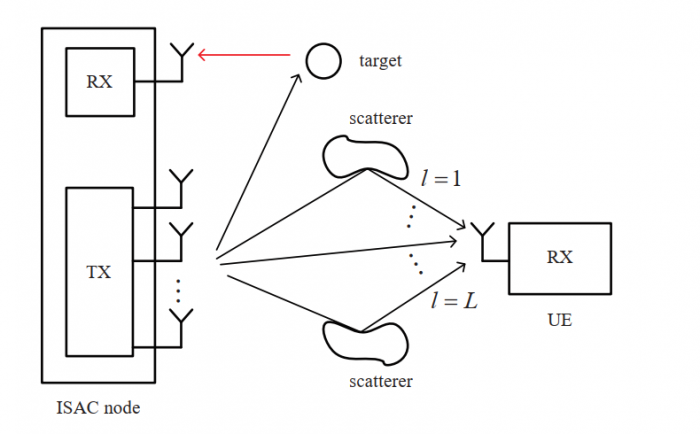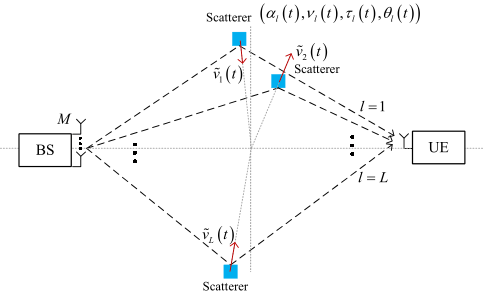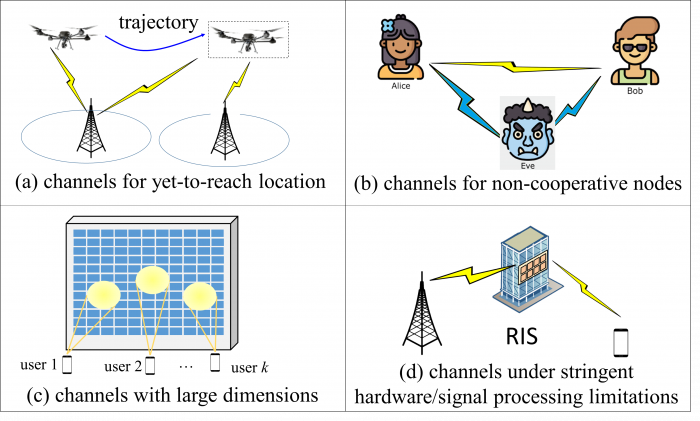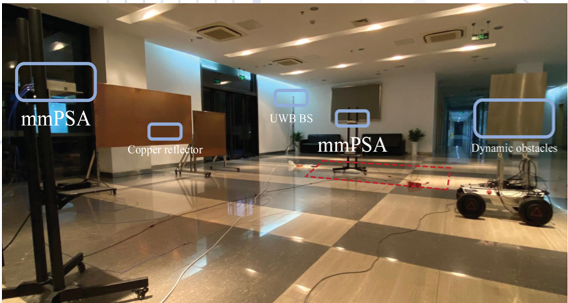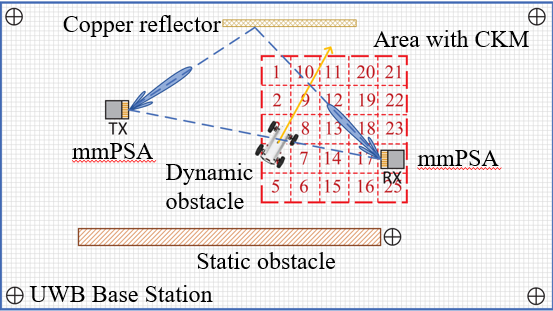研究简介
随着人类对空间资源的深入探索利用、重大突发事件应急响应需求的不断提升、以及无人化、自动化和智能化等新业务需求的不断涌现,网络发展面临着由传统地面蜂窝通信迈向未来三维立体通信的重大变革机遇。特别是无人机行业的高速发展,使得无人机呈现出与蜂窝通信技术紧密结合的发展趋势,形成网联无人机。网联无人机不仅可以实现超远距离遥控和高速率信息传输,还能够满足低成本空域融合的通信需求。然而,无人机在带来便利的同时,也造成了“黑飞”事件频发,严重危害公共安全和个人隐私。雷达感知系统可以充分发挥基站广泛和密集部署等优势,一方面对覆盖范围内移动目标进行全空域连续探测,定位、识别并跟踪侵入到范围内无人机,防范非合作无人机导致的各类事故;另一方面又能满足低空无人机的大带宽通信需求,实现载荷数据的实时回传和在网无人机的实时控制,融合多源感知实现在网无人机飞状态识别、路径规划和避障等功能。同时,由于通信和感知共享基站,可以降低感知功能的部署成本,并实现无人机通信感知一体化设计。
研究特点
1) 空地融合移动通信: 针对无人机通信,提出了无人机空中基站辅助通信和网联飞行器通信两大空地融合范式,揭示了空地融合移动通信系统的通信容量与飞行器轨迹及无线资源配置的内在关系,综合空气动力学及信息通信理论,在国际上首次提出了空地融合通信系统的能量效率度量指标,建立了空地融合通信能量效率理论,提出了容量最大化及能效最大化的飞行器轨迹优化方法。通过仿真验证和实验测量相结合,对网联无人机的可行性验证及性能进行评估,提出了基于垂直扇区划分和三维波束成形的干扰控制方案,采用了适用于网联无人机通信的基站侧三维天线模型,并利用随机几何方法分析了小区关联概率和通信中断率等性能。

图1 无人机通信场景
2) 无人机空间环境感知: 在无人机感知方面,针对移动通信网络空中覆盖不连续的问题,提出了基于图论和凸优化算法的覆盖感知无人机路径优化方法,解决低空覆盖盲区问题。此外,利用通感一体化网络的环境学习及认知能力,挖掘三维空间物理和射频环境的高度相关性,提出了三维物理环境地图和信道知识地图同构框架,采用了智能化深度强化学习方法,获取空中障碍物位置信息以避免通信阻塞,并实现网络资源配置和空中飞行器节点控制的联合设计。

a) 无人机感知覆盖增强

b)三维信道知识地图构建
图2 无人机感知场景
专著:
[B1] Yong Zeng, Ismail Guvenc, Rui Zhang, Giovanni Geraci, and David W. Matolak (Editors), UAV Communications for 5G and Beyond, Wiley, 2020. https://ieeexplore.ieee.org/book/9295056
期刊:
[J1] Li, P. Li, G. Cheng, J. Xu, J. Chen, and Y. Zeng, “Channel Knowledge Map (CKM)-Assisted Multi-UAV Wireless Network: CKM Construction and UAV Placement,” Journal of Commun. and Inf. Netw., vol. 8, no. 3, pp. 256-270, Sep. 2023. https://ieeexplore.ieee.org/document/10272353
[J2] R. Li, Z. Xiao and Y. Zeng, “Towards seamless sensing coverage for cellular multi-static integrated sensing and communication,” IEEE Trans. Wireless Commun., 2023. https://ieeexplore.ieee.org/document/10304081
[J3] B. Li, Q. Li, Y. Zeng, R. Yue, and R. Zhang, "3D trajectory optimization for energy-efficient UAV communication: a control design perspective," IEEE Trans. Wireless Commun., vol. 21, no. 6, pp. 4579-4593, June 2022. https://ieeexplore.ieee.org/document/9652043
[J4] Q. Wu, J. Xu, Y. Zeng, D. W. K. Ng, N. A. Dhahir, R. Schober, and A. L. Swindlehurst, “A comprehensive overview on 5G-and-beyond networks with UAVs: From communications to sensing and intelligence,” IEEE J. Sel. Commun., vol. 39, no. 10, pp. 2912-2945, Oct. 2021. https://ieeexplore.ieee.org/document/9456851
[J5] Y. Zeng, X. Xu, S. Jin, and R. Zhang, “Simultaneous navigation and radio mapping for cellular-connected UAV with deep reinforcement learning,” IEEE Trans. Wireless Commun., vo. 20, no. 7, pp. 4205 - 4220, Jul. 2021. https://ieeexplore.ieee.org/document/9354009
[J6] H. Lu, Y. Zeng*, S. Jin, and R. Zhang, "Aerial intelligent reflecting surface: joint placement and passive beamforming design with 3D beam flattening," IEEE Trans. Wireless Commun., vol. 20, no. 7, pp. 4128 - 4143 , Jul. 2021. https://ieeexplore.ieee.org/document/9351782
[J7] N. Gao, Y. Zeng* J. Wang, D. Wu, C. Zhang, Q. Song, J. Qian, and S. Jin, "Energy model for UAV communications: experimental validation and model generalization," accepted by China Communications., available on arXiv https://arxiv.org/abs/2005.01305
[J8] J. Zhang, Y. Zeng, and R. Zhang, "Multi-Antenna UAV Data Harvesting: Joint Trajectory and Communication Optimization," Journal of Communications and Information Networks, vol. 5, no. 1, pp. 86-99, Mar., 2020. https://ieeexplore.ieee.org/document/9055113
[J9] Q. Song, Y. Zeng, J. Xu and S. Jin, “A Survey of prototype and experiment for UAV Communications,” accepted by Science China Information Sciences. https://link.springer.com/article/10.1007/s11432-020-3030-2
[J10] C. Zhan and Y. Zeng, "Energy-efficient data uploading for cellular-connected UAV systems," IEEE Trans. Wireless Commun., vol. 19, no. 11, pp. 7279-7292, Nov. 2020. https://ieeexplore.ieee.org/document/9149835
[J11] L. Xie, J. Xu, and Y. Zeng, "Common Throughput Maximization for UAV-Enabled Interference Channel With Wireless Powered Communications," IEEE Trans. Commun., vol. 68, no. 5, pp. 3197-3212, May, 2020. https://ieeexplore.ieee.org/document/8982086
[J12] J. Zhang, Y. Zeng, and R. Zhang, “Receding horizon optimization for energy-efficient UAV communication,” IEEE Wireless Commun. Letters, vol. 9, no. 4, pp. 490-494, April, 2020. https://ieeexplore.ieee.org/document/8935101
[J13] C. Zhang and Y. Zeng, “Aerial-ground cost tradeoff for multi-UAV enabled data collection in wireless sensor networks,” IEEE Trans. Commun. vol. 68, no. 3, pp. 1937-1950, Mar. 2020. https://ieeexplore.ieee.org/document/8943326
[J14] L. Xiao, Y. Xu, D. Yang, and Y. Zeng, "Secrecy energy efficiency maximization for UAV-enabled mobile relaying," IEEE Trans. Green Commun. and Networking, vol. 4, no. 1, pp. 180-193, Mar. 2020. https://ieeexplore.ieee.org/document/8884126
[J15] C. Shen, T.-H. Chang, J. Gong, Y. Zeng, and R. Zhang, "Multi-UAV interference coordination via joint trajectory and power control," IEEE Trans. Signal. Process, vol. 68, pp. 843-858, Jan. 2020. https://ieeexplore.ieee.org/document/8961096
[J16] Y. Zeng, Q. Wu, and R. Zhang, “Accessing from the sky: a tutorial on UAV communications for 5G and beyond,’’ Proceedings of the IEEE (Invited Paper), vol. 107, no. 12, pp. 2327-2375, Dec. 2019. (ESI highly cited paper, ESI hot paper) https://ieeexplore.ieee.org/document/8918497
[J17] C. Zhan and Y. Zeng, "Completion time minimization for multi-UAV enabled data collection," IEEE Trans. Wireless Commun., vol. 18, no. 10, pp. 4859-4872, Jul., 2019. https://ieeexplore.ieee.org/document/8779596
[J18] Y. Zeng, J. Xu, and R. Zhang, “Energy minimization for wireless communication with rotary-wing UAV,” IEEE Trans. Wireless Commun., vol. 18, no. 4, pp. 2329 - 2345, Apr. 2019. (ESI highly cited paper, ESI hot paper) https://ieeexplore.ieee.org/document/8663615
[J19] Q. Song, F.-C. Zheng, Y. Zeng, and J. Zhang, "Joint beamforming and power allocation for UAV-enabled full-duplex relay", IEEE Trans. Veh. Technol., vol. 68, no. 2, pp. 1657-1671, Feb. 2019. https://ieeexplore.ieee.org/document/8586877
[J20] S. Zhang, Y. Zeng, and R. Zhang, "Cellular-Enabled UAV Communication: A Connectivity-Constrained Trajectory Optimization Perspective," IEEE Trans. Commun. (EIC Invited Paper), vol. 67, no. 3, pp. 2580-2604, Mar. 2019. (ESI highly cited paper) https://ieeexplore.ieee.org/document/8531711
[J21] G. Zhang, H, Yan, Y. Zeng, M. Cui, and Y. Liu, "Trajectory optimization and power allocation for multi-hop UAV relaying communications," IEEE Access, vol. 6, pp. 48566 - 48576, Aug. 2018. https://ieeexplore.ieee.org/document/8453022
[J22] Y. Zeng, J. Lyu, and R. Zhang, "Cellular-connected UAV: potentials, challenges and promising technologies," IEEE Wireless Commun., vol. 26, no. 1, pp. 120-127, Feb. 2019. (ESI highly cited paper) https://ieeexplore.ieee.org/document/8470897
[J23] J. Zhang, Y. Zeng, and R. Zhang, "UAV-enabled radio access network: multi-mode communication and trajectory design," IEEE Trans. Signal Process., vol. 66, no. 20, pp. 5269 - 5284, Oct. 2018. https://ieeexplore.ieee.org/document/8443133
[J24] C. Zhan, Y. Zeng, and R. Zhang, “Trajectory design for distributed estimation in UAV enabled wireless sensor network,” IEEE Trans. Veh. Technol., vol. 67, no. 10, pp. 10155 - 10159, Oct. 2018. https://ieeexplore.ieee.org/document/8419316
[J25] J. Xu, Y. Zeng, and R. Zhang, "UAV-enabled wireless power transfer: trajectory design and energy optimization," IEEE Trans. Wireless Commun., vol. 17, no. 8, pp. 5092-5106, Aug., 2018. (ESI highly cited paper) https://ieeexplore.ieee.org/document/8365881
[J26] X. Xu, Y. Zeng*, Y. L. Guan, and R. Zhang, "Overcoming Endurance Issue: UAV-Enabled Communications with Proactive Caching", IEEE J. Sel. Areas on Commmun., vol. 36, no. 6, pp. 1231-1244, Jun., 2018. https://ieeexplore.ieee.org/document/8374947
[J27] J. Lyu, Y. Zeng, R. Zhang, "UAV-aided offloading for cellular hotspot," IEEE Trans. Wireless Commun. vol. 17, no. 6, pp. 3988-4001, Jun., 2018. (ESI highly cited paper) https://ieeexplore.ieee.org/document/8329013
[J28] D. Yang, Q, Wu, Y. Zeng*, and R. Zhang, “Energy trade-off in ground-to-UAV communication via trajectory design,” IEEE Trans. Veh. Technol., vol. 67, no. 7, pp. 6721-6726, Jul. 2018. (ESI highly cited paper) https://ieeexplore.ieee.org/document/8316986
[J29] Y. Zeng, X. Xu, and R. Zhang, "Trajectory design for completion time minimization in UAV-enabled multicasting",IEEE Trans. Wireless Commun., vol. 17, no. 4, pp. 2233-2246, Apr., 2018. (ESI highly cited paper) https://ieeexplore.ieee.org/document/8255824
[J30] Q. Wu, Y. Zeng*, and R. Zhang, "Joint trajectory and communication design for multi-UAV enabled wireless networks," IEEE Trans. Wireless Commun., vol. 17, no. 3, 2109-2121, Mar., 2018. (ESI highly cited paper, ESI hot paper) https://ieeexplore.ieee.org/document/8247211
[J31] C. Zhan, Y. Zeng*, and R. Zhang, "Energy-efficient data collection in UAV enabled wireless sensor network," IEEE Wireless Commun. Letters, vol. 7, no. 3, pp. 328-331, Jun., 2018. (ESI highly cited paper) https://ieeexplore.ieee.org/document/9824168
[J32] H. He, S. Zhang, Y. Zeng*, and R. Zhang, "Joint altitude and beamwidth optimization for UAV-enabled multiuser communications," IEEE Commun. Letters. vol. 22, no. 2, pp. 344-347, Feb., 2018. (ESI highly cited paper) https://ieeexplore.ieee.org/document/8103781
[J33] J. Lyu, Y. Zeng, R. Zhang, and T. J. Lim, "Placement Optimization of UAV-Mounted Mobile Base Stations", IEEE Commun. Letters, vol. 21, no. 3, pp. 604-607, Mar., 2017. (ESI highly cited paper, IEEE Communications Society Heinrich Hertz Award) https://ieeexplore.ieee.org/document/7762053
[J34] Y. Zeng and R. Zhang, "Energy-Efficient UAV Communication with Trajectory Optimization," IEEE Trans. Wireless Commun., vol. 16, no. 6, pp. 3747-3760, Jun., 2017. (ESI highly cited paper, ESI hot paper, IEEE Marconi Prize Paper Award) https://ieeexplore.ieee.org/document/9674583
[J35] J. Lyu, Y. Zeng, and R. Zhang, "Cyclical multiple access in UAV-aided communications: a throughput delay tradeoff'', IEEE Wireless Commun. Letters, vol. 5, no. 6, pp. 600-603, Dec., 2016. https://ieeexplore.ieee.org/document/7556368
[J36] Y. Zeng, R. Zhang, and T. J. Lim, "Throughput maximization for UAV-enabled mobile relaying systems," IEEE Trans. Commun., vol. 64, no. 12, pp. 4983-4996, Dec., 2016. (ESI highly cited paper, ESI hot paper) https://ieeexplore.ieee.org/document/7572068
[J37] Y. Zeng, R. Zhang, and T. J. Lim, "Wireless communications with unmanned aerial vehicles: opportunities and challenges," IEEE Commun. Mag.,vol. 54, no. 5, pp. 36-42, May, 2016. (ESI highly cited paper, ESI hot paper) https://ieeexplore.ieee.org/document/7470933
会议:
[C1] Y. Yang, X. Xu and Y. Zeng, “Simultaneous radio and physical mapping for cellular-connected UAV by fusing radio and sensing data,” IEEE International Conference on Communications (ICC) Workshops, 2023, pp. 1433-1438. https://ieeexplore.ieee.org/document/10283578
[C2] S. Zeng, X. Xu, Y. Zeng, and F. Liu, "CKM-Assisted LoS Identification and Predictive Beamforming for Cellular-Connected UAV", IEEE ICC 2023. https://ieeexplore.ieee.org/document/10278702
[C3] R. Li, Z. Xiao, and Y. Zeng, “Beamforming Towards Seamless Sensing Coverage for Cellular Integrated Sensing and Communication,” IEEE ICC 2022 Workshop. https://ieeexplore.ieee.org/document/9814606
[C4] H. Li, P. Li, J. Xu, J. Chen and Y. Zeng, “Derivative-Free Placement Optimization for Multi-UAV Wireless Networks with Channel Knowledge Map,” IEEE ICC 2022 Workshop. https://ieeexplore.ieee.org/document/9814544
[C5] Y. Huang and Y. Zeng, "Simultaneous Environment Sensing and Channel Knowledge Mapping for Cellular-Connected UAV," accepted by IEEE Globecom 2021 Workshop. https://ieeexplore.ieee.org/document/9682178
[C6] X. Xu and Y. Zeng, "Time-weighted coverage of integrated aerial and ground networks for post-disaster communications," IEEE WCNC 2020 Workshop. https://ieeexplore.ieee.org/document/9124908
[C7] Y. Huang, X. Mo, J. Xu, L. Qiu, and Y. Zeng, "Online maneuver design for UAV-enabled NOMA systems via reinforcement learning," IEEE WCNC 2020. https://ieeexplore.ieee.org/document/9120492
[C8] Y. Zeng and X. Xu, "Path design for cellular-connected UAV with reinforcement learning," IEEE Globecom 2019, available online at https://arxiv.org/abs/1905.03440.
[C9] X. Xu and Y. Zeng, "Cellular-connected UAV: performance analysis with 3D antenna modelling," IEEE International Conference on Communications (ICC’19) Workshop. https://ieeexplore.ieee.org/document/8756719
[C10] M. A. Ali, Y. Zeng, and A. Jamalipour, "Delay-oriented spectrum sharing and traffic offloading in coexisting UAV-enabled cellular and WiFi networks," IEEE DySPAN 2018. https://ieeexplore.ieee.org/document/8610500
[C11] Y. Zeng, J. Xu, and R. Zhang, "Rotary-wing UAV enabled wireless network: trajectory design and resource allocation," IEEE Globecom 2018. https://ieeexplore.ieee.org/document/8647595
[C12] S. Zhang, Y. Zeng, and R. Zhang, “Cellular-enabled UAV communication: trajectory optimization under connectivity constraint”, IEEE International Conference on Communications (ICC’18). https://ieeexplore.ieee.org/document/8422584
[C13] J. Xu, Y. Zeng, and R. Zhang, “UAV-Enabled Multiuser Wireless Power Transfer: Trajectory Design and Energy Optimization”, Asia-Pacific Conference on Communications (APCC) Workshop, 2017. https://ieeexplore.ieee.org/document/8254949
[C14] J. Xu, Y. Zeng, and R. Zhang, “UAV-enabled wireless power transfer: Trajectory design and energy region characterization”, IEEE Globecom Workshop, 2017. https://ieeexplore.ieee.org/document/8269097
[C15] J. Lyu, Y. Zeng, and R. Zhang, "Spectrum sharing and cyclical multiple access in UAV-aided cellular offloading," IEEE Globecom, 2017. https://ieeexplore.ieee.org/document/8254236
[C16] Q. Wu, Y. Zeng, and R. Zhang, "Joint trajectory and communication design for UAV-enabled multiple access," IEEE Globecom, 2017. https://ieeexplore.ieee.org/document/8304077
[C17] J. Zhang, Y. Zeng, and R. Zhang, "Spectrum and energy efficiency maximization in UAV-enabled mobile relaying," IEEE International Conference on Communications (ICC), 2017. https://ieeexplore.ieee.org/document/7997208
创建: Dec 24, 2023 | 21:57
